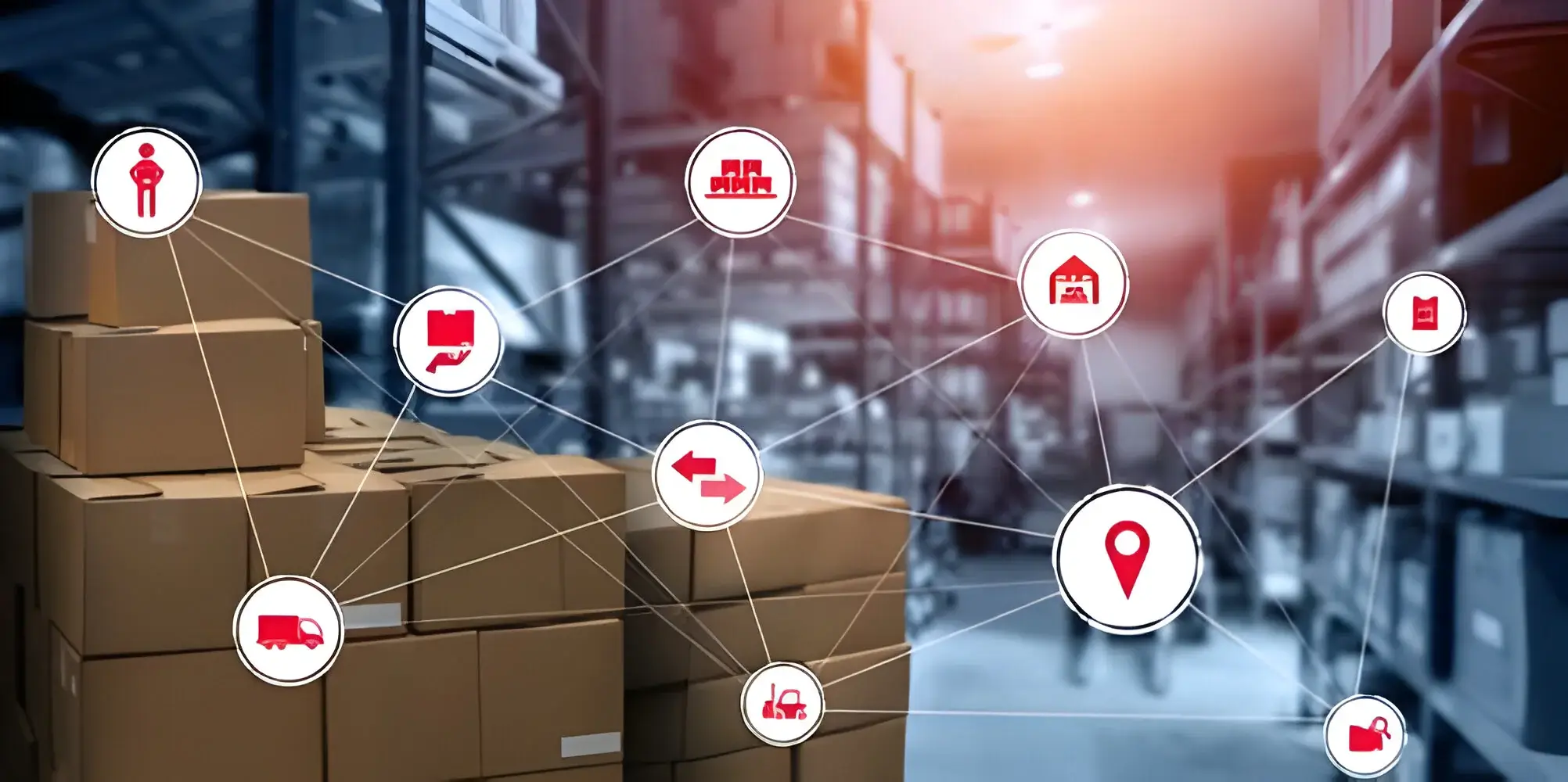The retail sector is extremely competitive. Some retailers excel, offering great value and achieving growth. Others struggle to keep up, despite their best efforts. Predicting and adapting to consumer demand is crucial. Market trends and uncertainties make staying on top hard. But what if you could foresee changes? Advanced supply chain forecasting lets you thrive, not just survive.
Delve deeper and explore how precise demand forecasting transforms the modern supply chain. It spotlights the opportunities for retailers who are keen to optimize operations, enhance customer satisfaction, and boost profitability.
Demand Forecasting for the Modern Supply Chain
Understanding and predicting demand precisely is key to growth. The modern supply chain is complex and fast. It spans globally. Retailers need a strong demand forecasting system. This system must navigate and use these complexities. Retailers should move beyond traditional methods. They must embrace advanced analytics, technology, and planning.
Demand forecasting is key in supply chain management, especially for retail. It affects all business areas, from production to distribution. It predicts future customer demand. This process uses past sales, current trends, and future projections.
The Backbone of Strategic Planning
Demand forecasting serves as the backbone for strategic business planning. It updates when to ramp up production, invest in new product development, or initiate market expansion strategies. Without it, businesses navigate blindly, often resulting in either surplus inventory that inflates costs or inventory shortages that miss out on potential sales and harm customer relationships.
A Multi-Faceted Process
Demand forecasting may look simple. It seems like it’s only predicting future sales from past trends. Yet, it’s complex. It uses layers of data and market dynamics. Seasonal changes matter, and so do consumer patterns. Economic signs and socio-political events also impact demand.
Data-Driven Decision Making
The foundation of accurate demand forecasting is high-quality, relevant data. Historical sales data offer insights into past consumer behavior. It integrates additional data points such as marketing campaign effectiveness, competitor activity, and changes in consumer preferences. Furthermore, it enriches the forecasting model by providing a more comprehensive view of potential future demand.
Technological Advancements Enhancing Accuracy
Advanced technologies like AI and machine learning have revolutionized demand forecasting. These technologies sift through and analyze extensive datasets that are far beyond human capabilities. It happens by detecting patterns and predicting future trends with remarkable accuracy. Big data analytics further bolsters forecasting data by incorporating diverse data sources. This includes social media sentiment analysis, economic forecasts, and even weather predictions. This paints a detailed picture of potential demand scenarios.
Catering to Different Business Needs
Demand forecasting is not a one-size-fits-all process. It is versatile enough to handle the specific needs of a business. For instance, short-term forecasting focuses on the immediate future (usually up to 12 months ahead). It aids in making operational decisions such as inventory management and staffing. Conversely, long-term forecasting takes several years into account. It enables strategic guidance—for capital investments, market entry, and product development.
The Challenge of Market Volatility
Demand forecasting faces challenges, despite its importance. Market swings disrupt even solid forecasts. Rapidly changing consumer preferences complicate matters. New competitors and global events reshape demand. Inaccurate or incomplete data sets misleading conclusions, steering businesses in the wrong direction. To ensure you stay on the right track with demand forecasting and stay effective in achieving accurate forecasts, we’ve compiled some best practices:
- Comprehensive Supply Chain Data Integration: Ensure forecasts incorporate a wide range of data sources to capture the full spectrum of factors affecting demand.
- Leveraging Technology: Utilize the latest in AI, machine learning, and big data analytics to enhance the accuracy of demand predictions.
- Flexibility and Adaptability: Stay prepared to adjust forecasts as new data becomes available, embracing a flexible approach to planning.
- Collaborative Effort: Demand forecasting should be a collaborative endeavor that draws on insights from across the organization, including sales, marketing, operations, and finance departments.
Importance of Demand Forecasting in Supply Chain Management
Demand forecasting promotes efficiency in the supply chain. This process is crucial for several compelling reasons, all aimed at bolstering a retailer’s ability to serve its customers effectively while maintaining optimal operational efficiency.
1. Optimizes Inventory Efficiency
The heart of retail success lies in having the right products at the right time. Demand forecasting enables you to achieve just that. By accurately predicting customer demand, you can maintain the perfect inventory level. Avoiding overstock frees up capital instead of tying it in unsold goods. Avoiding understock prevents missed sales and keeps customers satisfied. Precise forecasting drives effective inventory management. This strategy keeps your cash flow healthy and reduces storage costs.
2. Enhances Customer Experience
Your customers expect their desired products to be available when they need them. Demand forecasting ensures you meet these expectations every time. This reliability strengthens your customers’ trust in your brand. It encourages better customer satisfaction, leading to long-term loyalty and repeat business. Satisfied customers are also more likely to recommend your store to others. This unlocks new business opportunities and improves brand reputation.
3. Supports Strategic Planning
Demand forecasting offers insights for strategic decisions. It reveals trends and market dynamics. You learn to anticipate changes in consumer behavior. This knowledge guides choices on product lines, marketing, and expansion. Demand forecasting aligns your strategy with market demand. It lets you seize opportunities and reduce risks.
4. Improves Supplier Relationships
Accurate demand forecasts make working with suppliers smoother. Clear forecasts improve collaboration. Suppliers prefer predictable orders. Better forecasting may secure favorable terms. Suppliers negotiate with partners who offer reliable projections. This smooths the supply chain, saves costs, and enhances product quality.
5. Facilitates Financial Planning
Future demand predictions aid financial planning. It guides in resource allocation—ensuring you invest in the right products. It also aids in budgeting and financial forecasting. This gives you a clearer picture of expected sales volumes and revenue. This clarity is essential to maintain healthy business operations and expert long-term growth.
6. Encourages Agility and Responsiveness
Especially in retail, agility is a competitive advantage. Demand forecasting enables you to be more agile and responsive to market changes. With advanced notice of shifting consumer preferences, you can adjust your inventory, marketing, and sales strategies quickly. This responsiveness ensures you stay ahead of trends and meet your customers’ needs, no matter how rapidly they evolve.
💡Fact
Did you know supply chain disruptions have severely impacted 79% of small- and medium-sized businesses, causing a 41% increase in operational costs and a 28% cash flow delay?
Demand Forecasting Methods in Supply Chain
There are multiple approaches to supply chain forecasting. Scroll below and identify which works best for your business.
1. Capacity Forecasting
Knowing your operational limits matters. Capacity forecasting precisely estimates needed resources—labor, machinery, and storage. It balances ambition with reality. You meet goals efficiently without wasting resources on idle capacity.
2. Supplier Performance Forecasting
Reliable suppliers are the backbone of a smooth supply chain. Supplier risk assessment models check potential delays, quality issues, and instability among your suppliers. It ensures that you make wise decisions while choosing partners. Furthermore, it foresees challenges and develops contingency plans. This equips your supply chain operations against external shocks.
3. Inventory Level Forecasting
Inventory levels directly affect your cash flow and customer satisfaction. It’s a safety net, ensuring you can always meet customer needs, even when the unexpected occurs.
4. Distribution Network Forecasting
Efficiency in distribution saves costs and time. Network optimization models forecast the most efficient supply chain layout and operation of your distribution network. By analyzing facility locations, transportation costs, and service levels, you can streamline distribution, ensuring products reach customers swiftly and cost-effectively.
5. Lead Time Forecasting
In a global supply chain, timing is everything. Lead time analysis tools forecast delays in receiving materials from suppliers, considering historical performance and external risks. This foresight allows you to proactively adjust inventory levels and production schedules, ensuring you remain agile and responsive.
6. Product Life Cycle Forecasting
Every product has a journey. Lifecycle prediction models forecast each stage—from launch to decline—helping you align supply chain strategies with product demand over time. This method ensures you maximize profitability throughout the product’s lifecycle by anticipating changes and adapting strategies accordingly.
7. Transportation Demand Forecasting
Transportation is a critical, often volatile, supply chain element. Logistics regression models predict transportation needs based on shipping volumes and routes. This method helps you plan for the right transportation capacity, avoiding bottlenecks and ensuring products move through the supply chain as efficiently as possible.
8. Environmental Impact Forecasting
Today’s supply chain isn’t just about efficiency; it’s also about sustainability. Sustainability assessment tools forecast the environmental impact of your supply chain decisions, helping you minimize your carbon footprint, reduce waste, and conserve resources. It’s about making informed choices that benefit your business and the planet.
Conclusion: Seizing New Horizons in Retail
Supply chain forecasting is more than a strategic advantage—it’s a transformative tool that redefines how retailers operate, compete, and succeed. It is evident Consumers leave digital footprints that provide valuable insights into their preferences, behaviors, and likely future actions. Retailers that harness this data can anticipate demand more accurately, tailor their offerings, and enhance customer satisfaction.
Take the Next Step
The future belongs to retailers who leverage the power of forecasting to navigate market complexities, turning potential challenges into opportunities for innovation and success.
Unlock growth potential with demand forecasting. Turn your challenges into opportunities by harnessing data-driven insights. Utilize advanced machine learning algorithms to forecast demand accurately, optimizing resources and strategies for success at every level of your business lifecycle.
Frequently Asked Questions
Why is supply chain forecasting important?
Supply chain forecasting ensures that retailers understand customer preferences and demand patterns. It enables efficient stock management, so customers receive the right product at the right time.
What makes supply chain forecasting difficult?
Supply chain forecasting is challenging due to the complexity of global supply networks, rapidly changing market demands, and the unpredictability of economic shifts, political events, and natural disasters. These elements introduce volatility, making accurate predictions difficult and requiring agility and adaptability in forecasting models.
What is the difference between demand forecasting and supply forecasting?
One major thing that differentiates them is that demand forecasting predicts customer buying behavior whereas supply chain forecasting aims to optimize the entire supply chain—from the procurement of raw materials to the delivery of the finished goods.





